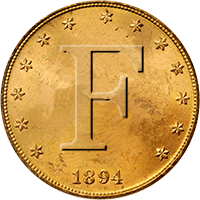... as a follow-up to my last posting, the electrolysis method is very safe and effective. The ferric chloride dip is messy.
Anyone can make a cheap electrolysis method using a discarded DC battery charger... the type you use to recharge batteries. Almost any one will work and the power output will not do further damage to a coin that is already cruddy. There are plenty of links on the web to show you how to build an electrolysis bath.
I've been doing this for years and within the last few months 'conserved' my best find to date, a crusty, corroded 1793 chain cent. And this was using a setup that cost me all of $10. If you don't have to buy the power supply, it will cost you nearly nothing.
I'll post pics of this coin in the near future.
Anyone can make a cheap electrolysis method using a discarded DC battery charger... the type you use to recharge batteries. Almost any one will work and the power output will not do further damage to a coin that is already cruddy. There are plenty of links on the web to show you how to build an electrolysis bath.
I've been doing this for years and within the last few months 'conserved' my best find to date, a crusty, corroded 1793 chain cent. And this was using a setup that cost me all of $10. If you don't have to buy the power supply, it will cost you nearly nothing.
I'll post pics of this coin in the near future.


